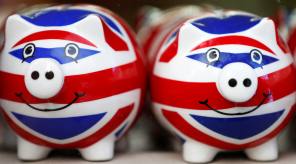

Ben Edwards said the economic consequences of an interest rate rise at a time of rapidly slowing economic growth would be stagflation.
Bank of England governor Mark Carney has previously told the Treasury Select Committee of the UK Parliament that if there is a no deal Brexit it may be appropriate for interest rates to rise.
But Mr Edwards said the Bank of England would not put rates up and risk stagflation and noted that in the past Mr Carney has placed great emphasis on the rate of unemployment before raising rates.
This meant Mr Edwards has continued to position his portfolios for the Bank of England not to increase rates.
He said bond investors should divide the market into two, with the US being on a different course to the rest of the world, as interest rates were likely to keep rising there.
Mr Edwards said the prudent course for investors across many asset classes was to be cautious, but he felt European bonds were relatively attractive as companies there have relatively low levels of borrowing, unlike in the US, so were less vulnerable to higher rates.
He added the interest rate on these corporate bonds was attractive because government bonds in Europe continued to have very low yields.
Mr Carney said a no deal Brexit would likely see sterling fall sharply in value, which would create much higher inflation.
He said that when this happened immediately after the Brexit vote in June 2016, the Bank took the view the higher inflation would be temporary so was content to ignore it, which helped the economy to grow.
But he said if sterling were to fall and the currency drop in value after a no-deal Brexit, he would view the higher inflation as a more permanent feature and, in line with the Bank of England’s mandate to achieve inflation at or near 2 per cent, he would put interest rates up.
Because higher interest rates lead to higher borrowing and debt repayment costs, the level of demand in the economy falls. This leads to slower economic growth and potentially higher unemployment.
Mr Carney said in such a scenario he would put rates up, even if he felt unemployment would rise.
But stagflation is when economic growth remains persistently low or negative while inflation remains high.
Typically, a lack of demand in the economy, which creates low growth, also creates low inflation. A rising level of economic growth typically leads to higher spending in the economy, and so to higher inflation.
In both scenarios policymakers have tools to balance the economy. But in stagflation, if the Bank put rates up to curb inflation they are likely to cause growth to fall further which would likely mean a further fall in the value of the currency creating more inflation, but if they kept rates low to boost growth, inflation would rise, damaging the level of growth.
Peter Elston, chief investment officer at Seneca, said while he was very cautious on the outlook for equities, he had invested more than the market average in European shares because he felt the economy remains in the early stages of economic recovery, and so interest rates won’t rise.
James Foster, who runs the £1.3bn Artemis Strategic Bond fund, said UK interest rates would rise only after those of the Europe and, with that in mind, he was cautious on European bonds and instead has bought UK government bonds with a short date to maturity.
Bryn Jones, head of fixed income at Rathbones, has also bought UK government bonds because he feels the interest from those assets was attractive in light of recent price falls.
Mr Elston said he thought it was "too early" to invest much in bonds, and he expected prices to fall further.
david.thorpe@ft.com



